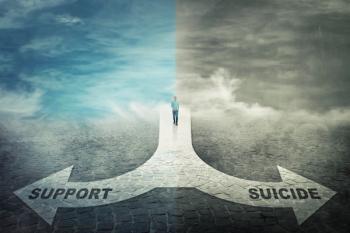
Accepting Patients as They Are: The Joys and Pains of Street Rounds
A recent experience on street rounds offered a moment that brought this psychiatrist back to one of the main reasons she chose psychiatry as a profession.
A BETTER PSYCHIATRIST
Editor's note: This essay won an “Honorable Mention” in our
A recent experience on street rounds offered a moment that brought me back to one of the main reasons I chose psychiatry as a profession.
“I’m not going to ER! You can’t help me! What are they going to do for me there? Nothing. Why would I go to the ER if I can just go buy Klonipin on the street instead of waiting for hours in the ER?” This was a response by a homeless man after I asked if I could walk him to the Massachusetts General Hospital emergency department (ED), just around the corner. We found him at the end of street rounds with
His septum was deviated. He had a large scleral hemorrhage and blood dripped from his nose and tear ducts. I must say, I couldn’t argue with him. I know exactly what will occur once he walks into the ED. He will be "written off" as the resource-abusing addict, intoxicated and looking for a break from the street. He will likely be passed over, waiting for hours in the CDU, a section of the ED where non-critical patients sit in a large waiting room until they can be seen. He will then be dismissively examined, receive a head CT, and discharged. It was a glaring and stark reminder of the frustration and futility this man must have dealt with trying to access care within our current health care system.
How many endless and unproductive encounters in the ED would be necessary to cause his current level of mistrust? It was enough mistrust that he was crying blood and feeling it would be useless to present for care.
A stark contrast
The dichotomy between my experience with rounds on the street and my typical position as a resident performing emergent psychiatric evaluation in the ED has been remarkable. Although patient demographics are similar-with the same range of symptoms and illness-the energy is different. The relationships and interactions are poles apart (I imagine for the patient as well). Taking the time to understand a patient’s practical needs and viewing the patient as a person influence how I now think about care and treatment goals.
During
We constantly tout the idea in psychiatric care that people are not a psychiatric diagnosis, but often the diagnosis is the only thing our assessment includes and portrays. We rarely consider, much less incorporate, the
Few psychiatrists have an opportunity for a bidirectional conversation with a patient to discover his or her concerns and practical needs. The question is why not? If I have a medical record, chock full of facts at my disposal, why waste time rehashing what is already known? Instead, sitting and talking with a patient will provide more helpful information than any intake to make useful and practical treatment decisions and goals.
Quality not quantity
By sitting on the street with the homeless man who was traumatized and riddled with blood, I gathered more information about his current circumstances and needs in 10 minutes than I would have after a 30-minute interview in the ED. I didn’t learn his psychiatric diagnosis, medications, or
Our goals for treatment and wellness are often heavily misaligned with the reason patients present for care. Spending less time getting the “facts” and more time sitting and talking with a person about their needs and goals would waste less time and energy pushing medications, programs, and other treatment that may never work for a patient. If instead we asked how we might be helpful rather than impose our values on patients, we would be practicing the medicine that drove us to become doctors and psychiatrists in the first place.
Newsletter
Receive trusted psychiatric news, expert analysis, and clinical insights — subscribe today to support your practice and your patients.

















